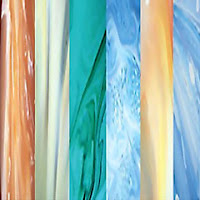Fitting work is a very important work in engineering. In fitting shop unwanted material is removed with the help of hand tools. It is done for mating, repair and manufacturing purposes. The person working in the fitting shop is called a fitter. A fitter should have the complete knowledge of the tools used in the shop. Commonly used tools are hacksaw, files, chisels etc.
PHYSICAL PROPERTIES OF METALS
As different types of metals are used in fitting shop, therefore, it is necessary for the students to have some knowledge about the physical properties of the metals.Luster
It is the ability of a metal surface to reflect light rays.
Color
It is the property of the metal to show a specific surface appearance. It depends upon the composition of the metal.
Density
It is defined as the mass per unit volume of the metal. It is measured in Kg/cm^3.
Melting point
It is the temperature at which a metal flows like a fluid is known as melting point. Melting point of iron is 1539 C.
Boiling point
The temperature at which a metal starts boiling is known as the boiling point of the metal.
Plasticity
By this property of the metal it can be converted into required shape and size for commercial use either by application of heat or pressure or both.
Elasticity
It is the property of the metal by which it can resist permanent deformation in new shape and size due to external pressures.
Stiffness
Due to this property material resists deflection due to external loads.
Malleability
It is the property by which metal can be elongated in all directions by the application of external pressure, due to this property metal can be converted into sheets.
Toughness
Due to this property metal can withstand bending without failure.
Ductility
By this property metal can be drawn in the form of wires, without failure.
CLASSIFICATION OF METALS
a. Ferrous metals example: mild steel, cast iron, high speed steel etc.b. Non-ferrous metals example: copper, brass, aluminium, tin etc.
FERROUS METALS
In these metals the percentage of iron is very high. These are commonly used for engineering purposes. Some other materials like carbon, sulphur, nickel etc. are also mixed into ferrous metals to change their properties. Ferrous metals are magnetic in nature and have more hardness.STEEL:
Steel is mixture of iron and carbon. It is very widely used in engineering for different purposes.ALLOY STEEL:
It is made by combining some percentage of additional elements into plain carbon steels. The material to be mixed depends upon the properties required from alloy steel. Generally strength, hardness, resistance to corrosion are the main desirable properties. Nickel, phosphorus, silicon, chromium, molybdenum etc. are added to make alloy steels.CAST IRON:
The iron containing carbon more than 2% is known as cast iron. It is hard and brittle material. It is generally used for making beds and heavy parts of machines. It is mainly of two types:a. Grey cast iron: Grey cast iron is self lubricated material and is easy to machine due to free graphite’s.
b. White cast iron: White cast iron is difficult to machine due to the presence of cementite.















The website indianxporter.com seems to be a platform dedicated to facilitating import-export activities between India and the rest of the world. The website offers a range of services to both buyers and sellers, including finding suppliers and buyers, assisting with logistics, and providing market intelligence.
ReplyDelete